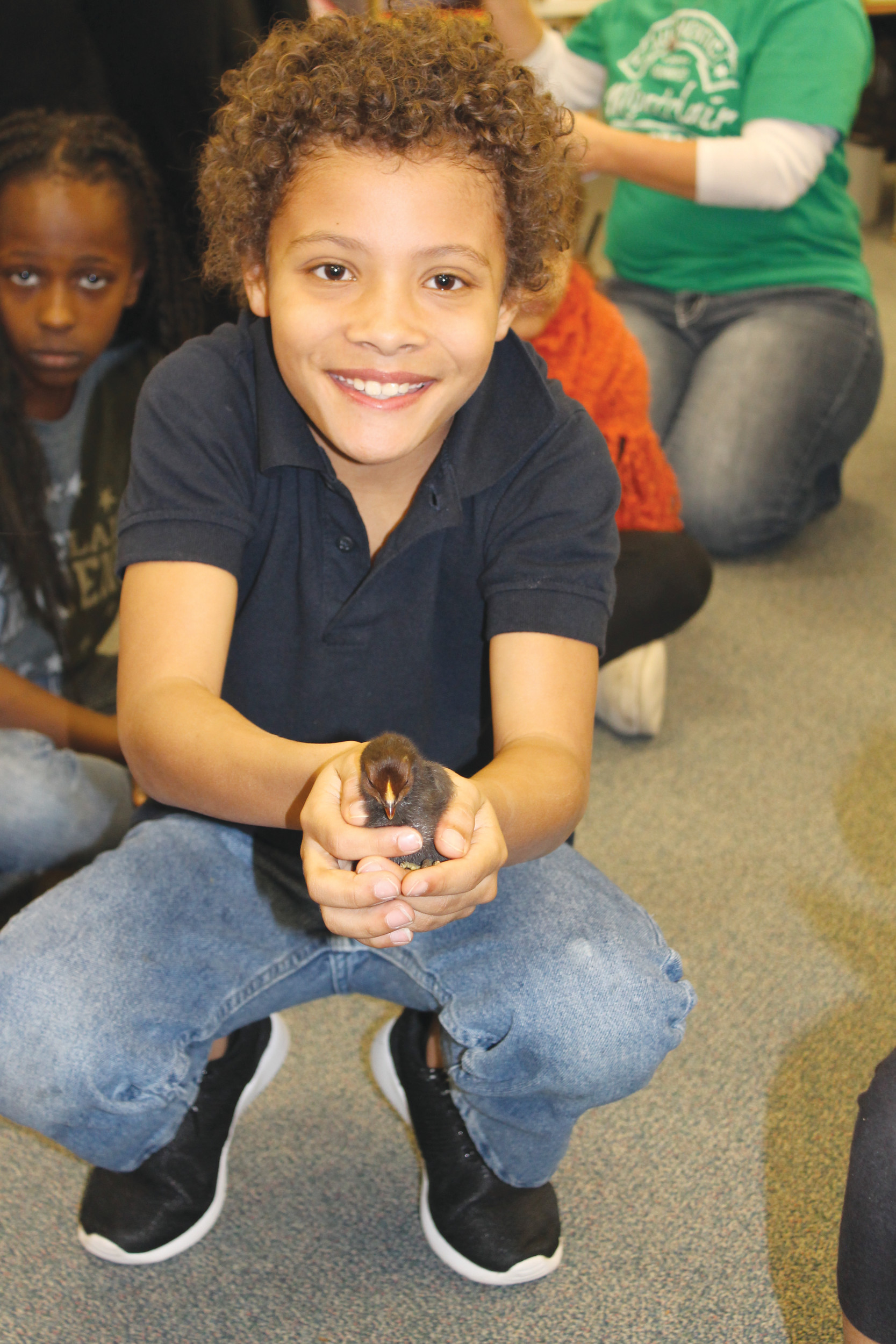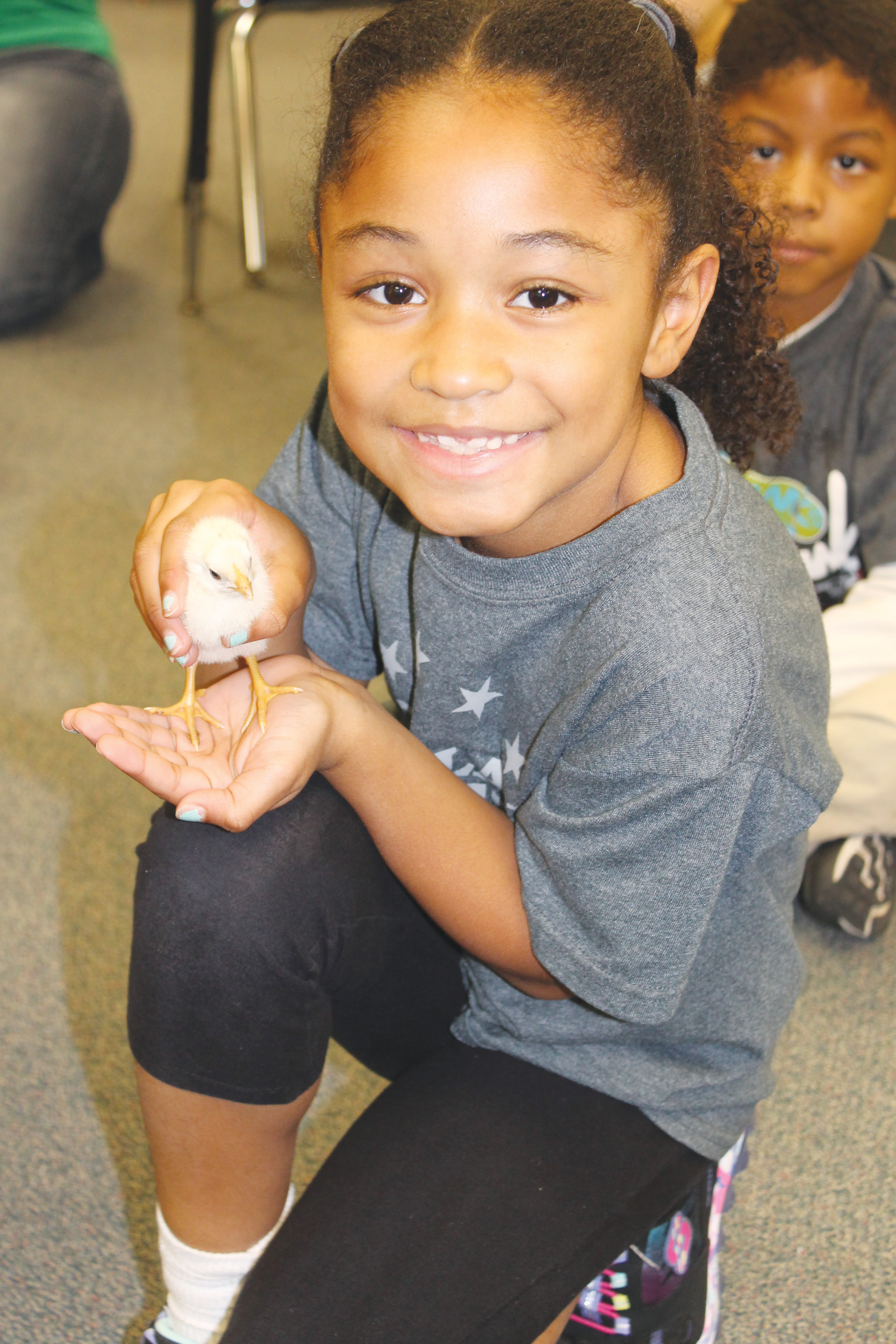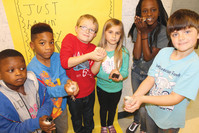Hangin' with my peeps
ORANGE PARK – With two hands, Malakye West gingerly picked up the four-day-old chick with two hands and held it to his cheek.
West and his second grade classmates at Montclair Elementary spent …
This item is available in full to subscribers.
Attention subscribers
To continue reading, you will need to either log in to your subscriber account, below, or purchase a new subscription.
Please log in to continueDon't have an ID?Print subscribersIf you're a print subscriber, but do not yet have an online account, click here to create one. Non-subscribersClick here to see your options for subscribing. Single day passYou also have the option of purchasing 24 hours of access, for $1.00. Click here to purchase a single day pass. |
Hangin' with my peeps
ORANGE PARK – With two hands, Malakye West gingerly picked up the four-day-old chick with two hands and held it to his cheek.
West and his second grade classmates at Montclair Elementary spent three weeks learning about the life cycle of chickens through the Clay County 4-H Embryology program called Spread Your Wings.
“I learned about their cycle,” said West, who is 8. “Our teacher read a lot of books about chickens. We made our own books about chickens called My Chick Journal.”
Teachers have to apply for the Extension Service’s “Spread Your Wings” program, which gives students hands-on experience watching the eggs hatch. The students learned about the anatomy of chickens and caring for baby chicks once they hatched.
“I’ve seen that they sleep a lot but after they grow they’re becoming more active and try to take care of themselves,” said Samantha Orrego, 8. “First a hen lays the egg, second the hen lays on the eggs for 21 days which is three weeks. After that, the chick uses this egg tooth on its beak and pecks out of the egg. When it’s done, it doesn’t need it anymore so the tooth just falls off.” Orrego witnessed the chicks moving around, “not knowing where he is.”
“Then he’s learning where he is and what it’s like to be with his mom and being on the outside and learning how to take care of himself,” she said.
Teacher Michele White said she was nervous about the added responsibility of having 10 eggs in her classroom.
“You panic thinking ‘I’m responsible for all these lives and it’s going to be three weeks’ but really they hang out for two weeks so it’s easy but it’s so rewarding,” White said.
Terri Gilpin said it was her first year as a second grade teacher and her first experience with the “Spread Your Wings” program. She said it was easy to combine the program with the school’s normal science lessons.
“It parallels the life-cycle section in science,” Gilpin said. “For me to see the different approach with the incubators, I enjoyed it. It was a little chaotic because the kids want to run with the chickens but they got a lot out of it, I think. It reminded me of a time on the farm on my aunt’s farm.”
Of the eight fertilized eggs received by White’s class, six hatched including two black chicks, a small brown one and three white chicks who the students named Oreo, Spot, and Fluffy among other names.
Each month except for November and December, 4-H Youth Development and Extension Agent Stephanie Conner delivers up to 10 eggs in an incubator to classrooms around Clay County. Each class is responsible for monitoring the incubator’s temperature and humidity levels for the next three weeks of the chick’s life. Eggs are donated by a local Clay County farmer and are mixed breeds.
“Once the eggs hatch, the chicks go back to the farmer,” Conner said, who said the farmer wished to remain anonymous. “The farmer has donated all the eggs to this program, as they believe this program is a benefit and a blessing for kids today to participate in.”
Chickens originated in Asia and the more than 10 billion chickens alive today are one of 113 breeds.Orrego said the opportunity to hatch chicks was an experience she will never forget.
“This has been the best time of my life,” Orrego said. “I’ve never touched a baby chick. This is a once in a lifetime chance to see the baby chicks and to learn about them.”












